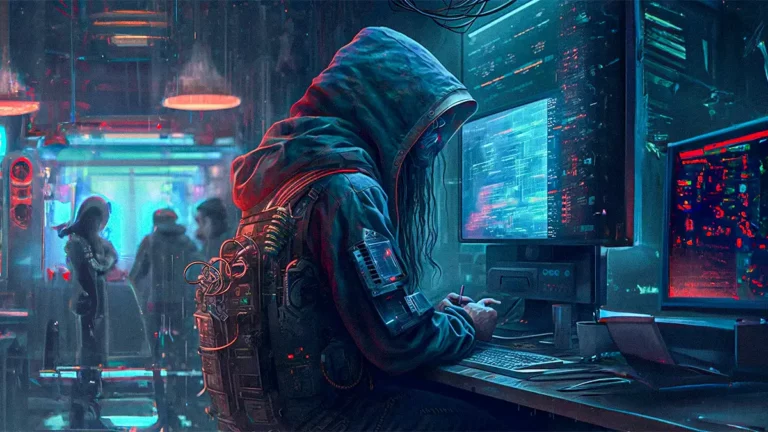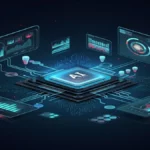Emerging products of the future, technology in 2030, such as industrial robots, artificial intelligence, and machine learning, are advancing at a rapid pace. These developments can improve the speed, quality, and cost of goods and services, but they also displace large numbers of workers by using 2030 any gadgets. This possibility challenges the traditional benefits model of tying health care and retirement savings to jobs. In an economy that employs dramatically fewer workers, we need to think about how to deliver benefits to displaced workers, 2030 technology. If automation makes jobs less secure in the future, there needs to be a way to deliver benefits outside of employment. “Flexicurity,” or flexible security, is one idea for providing health care, education, and housing assistance, whether or not someone is formally employed.
Affective AI / Affective computing :
Artificial Intelligence is already everywhere in 2020; it’s just not as fun as we thought it’d be. If you’ve missed the AI train, it can be described as follows: the increase in storage space (cloud), calculation capabilities (chips) and access to massive datasets (e-commerce, social media…) has allowed companies to create statistical models on steroid which can evolve when fed new information. Affective AI would take this process one step further and apply it to emotions. Effectively, an algorithm could tell your mood from the way you look (by training a deep learning algorithm on facial data), the way you write, or the way you speak, and offer a product or service in accordance. Feeling happy? How about a Starbucks advert for a Frappuccino to keep the good times coming? Feeling down? How about a Starbucks advert for a frozen coffee to turn that frown upside down?
Not to worry, though, this technology is famously unreliable. For now.
Human-Like AI Will Likely Become A Reality :
By 2030, there will be exponential improvements of computer processing power, voice recognition, image recognition, deep learning and other software algorithms. Likewise, natural language processing technologies like GPT-3 are constantly being updated and surpassed. It will likely reach the point where artificial intelligence can pass the Turing Test. This a test where a human engages in a conversation with a machine and probes it with numerous questions. And if that machine can convince that person that it’s a human, it passes the test. This could quickly lead to AI-generated virtual assistants that have the capability to carry nuanced conversations with you. And later, this technology 2030 could carry over to characters in virtual worlds and video games.
Connected Homes / Smart Homes :
The trend of AI in our homes is already ongoing, and will only accelerate over the next few years. In fact, we’ve already become accustomed to Google’s Nest and Amazon’s Alexa being able to adjust the settings of smart objects within our houses to fit pre-set parameters. But these two offers are just the beginning: as with most things internet-related, these services benefit from network effects, and will exponentially gain customer value as functionalities are added. An algorithm that can make a cup of coffee while opening the blinds and increasing the bathroom temperature when it senses someone get up is a lot more valuable than the sum of three different algorithms doing these tasks.
8K Virtual Reality Headsets Will Become Mainstream :
By 2030, most VR screens will have 8k resolution, which has 4 times the number of pixels on 4k screens. When you view character models and objects up close with these devices, there will be zero visible pixilation resulting in breathtaking detail and realism. Because of other equipment upgrades, VR games will have near zero latency and a wide field of view. Additionally, some haptic suits will become electrode meshes to maximise comfort and convenience.
Genetic predictions :
The raw computing power highlighted above can be used to analyse one’s genome and predict one’s chances of getting conditions such as heart disease or breast cancer. If that sounds exactly like the plot of Gattaca, trust your instincts. Regardless of the risks of genetic discrimination, DNA-based “predictions” could be the next great public health leap. For example, if women at high risk for breast cancer got more mammograms and those at low risk got fewer, those exams might catch more real cancers and set off fewer false alarms, leading to a better treatment rate and lower insurance premia. It could also lead to the rise of personalised medicine, though the logistics of such a task would likely be a financial and logistical disaster given the current political climate.
Brain-Interface Devices Will Become Mainstream :
By 2030, most VR headsets could include the option for a brain-computer interface to record users’ electrical signals, enabling actions to be directed by merely thinking about them. Headbands and wrist bands with non-invasive sensors could become the preferred choices for mainstream brain-computer interface use. However, the immersive effects provided by brain-computer interfaces could be limited at this stage and only usable in specific situations. Nonetheless, they will provide increasingly more lifelike ways of interacting with virtual characters, objects, and environments in the metaverse.
Human Augmentations / enhancements :
Thankfully, going genetic is not the answer to everything. Sometimes, some good old ingenuity and robotics are enough to solve our issues. Slowly but surely, we are seeing more and more natural, artificial, or technological alteration of the human body in order to enhance physical or mental capabilities, often in the form of bionic limbs. As we begin to better understand how the brain transmits information to the body, more and more companies will begin to see the value of improving people’s life (for a steep fee) and descend upon this space.
The First Quantum Computers With 1 Million Qubits Will Emerge :
By 2030, IBM and Google could each build quantum computers with 1 million qubits. This advancement will revolutionise how we solve optimisation problems, train and run machine learning algorithms, and better understand the physical processes of nature down to the sub-atomic level. It will revolutionise areas such as artificial intelligence, financial modelling, drug development, weather forecasting, and cyber-security. And by as soon as 2035, fully-functional quantum computers could become available to the public both in the cloud and as physical units
Graphene :
Though graphene has been over-hyped for so many years, we’re finally seeing something good come out of it. If you haven’t paid attention to the hype, graphene is a byproduct of graphite, which is itself carbon’s very close cousin. It is extremely strong, yet extremely thin, light and flexible (stronger than steel, thinner than paper). Oh, and it also conducts electricity really well. The applications are numerous, specifically for wearable electronics and space travel, where resistance and weight is a key component. Nevertheless, it will take many years to get to a wide array of use cases; we’ve built the world around silicon, and it’s very had to displace that kind of well-established, mature technology.
3D-Printed Human Organs Will Begin Being Used :
By 2030, 3d printing will be used to construct living, biological systems. Layer after layer of cells, could be dispensed from printer heads and placed exactly where they’re needed with microscopic precision. Initially, they’ll construct simple components like blood vessels and tissues. Next, they will begin to print relatively simple organs. In the coming decades, they could eventually print the majority of the 78 organs in the human body.
Nano-robotics :
For those wanting to go even smaller than micro-chips, allow me to introduce nano-robots. Currently in R&D phases in labs throughout the world, nano-robots are essentially very very tiny sensors with very limited processing power. The first useful applications of these nano-machines may very well be in nano-medicine. For example, biological machines could be used to identify and destroy cancer cells or deliver drugs. Another potential application is the detection of toxic chemicals, and the measurement of their concentrations, in the environment.
Artificial Brain Implants Will Restore Lost Memories :
By 2030, it could become possible to replicate small areas of the brain with artificial brain implants in order to repair damage from Alzheimer’s, strokes, or injuries. This also includes the restoration of lost memories. That’s because these devices can mimic the electrochemical signals from regions like the hippocampus, which is involved in the consolidation of information from short-term to long-term memory. The device would work by effectively replacing damaged parts of the brain, predicting what those parts of the brain should do from moment to moment, and then allowing the transmission of brain signals between areas where there was once a gap.
Green Tech :
Do you want your great-grand-kids to know what it’s like not to despise the sun? Then forget about all the above and concentrate on Green Tech : the science of making the world liveable. Because so much is being done in this space, we will avoid the details, and refer to better sources. The issue with most of the above is that they tend to work well in theory, but their adoption cost is incredibly high, as they often struggle to scale. As much as we’d like to see all of them being implemented yesterday, the road ahead is still long.
SpaceX’s 1st Crewed Mars Mission Will Be Successful :
By as early as 2024, SpaceX astronauts will launch into space and reach Mars by 2025. They will use the SpaceX Starship on the Super Heavy rocket to reach the planet. Additionally, they’ll bring robots with them to perform activities like making basic materials and parts on Mars. Additionally, after landing on Mars, the spacecraft would be loaded with Methane-based rocket fuel that they would create on Mars to return to Earth.
“Smart Grid” Technology Will Become Widespread In The Developed World :
By 2030, integrated smart grids will become widespread in developed nations.
Smart grids will provide the following advantages:
- Smart grids allow energy to be transmitted in both directions through power lines. This means that homes and businesses can add surplus electricity into the system so that no energy goes to waste.
- Smart grids will be adaptable to the sporadic power output produced by solar and wind energy sources, which would make large-scale renewables more feasible.
- With a smart grid, if a broken transmission line causes a blackout, sensors instantly locate the damaged area while electricity is rerouted to the affected area. This will lead to fewer, noticeable blackouts, in the future.
Edge Computing / Intelligent Edge :
While the vast majority of data processing for connected devices now happens in the cloud, constantly sending data back and forth can take far too long (as much as a few seconds, sometimes). 5G is a temporary answer, as mentioned above, but there might be a simpler solution: allowing objects to process data on their own (at the ”edge” of the eco-system). This would unlock a wide variety of issues in manufacturing, transport, and healthcare, where split-second decisions are key to a variety of process. Even fashion could benefit by creating self-sufficient smart wearables.
Small Modular Nuclear Reactors Could Gain Widespread Adoption :
Small modular reactors (SMRs) are a new class of smaller, cheaper, safer and more adaptable nuclear power plants. Since they can be built at a much lower cost than traditional reactors, they’re especially attractive to developing nations, which lack the ability to spend tens of billions of dollars on infrastructure. They’re also attractive to remote communities without long distance transmission lines, and for areas with limited water or space. Small modular reactors would also allow increments of capacity to be gradually added as power needs increase over time
The First Version Of The Quantum Internet Could Emerge :
A quantum internet would be one that uses quantum signals instead of radio waves to send information. This type of internet would be primarily used to send data that can’t be hacked or intercepted using conventional methods. In 2030, it may be possible to use a personal computer to transmit or access quantum-encrypted information through a cloud-based quantum computer. The U.S. Department of Energy has already unveiled its blueprint for a national quantum internet, and we may see a prototype for it by 2030.
Terabyte Internet Speeds Could Be Commonplace :
By 2030, 6G could replace 5G. Some experts estimate that it could be 100 times faster than 5G, which equates to 1 TB per second. At that speed, you could download 142 hours of Netflix movies in one second. 6G would also make it possible for cyberspace to support human thought and action in real-time through virtual reality and brain-computer interface devices mounted on the human body. This would result in virtual reality experiences that feel and look just like real life. Additionally, the Internet of Things will have the potential to grow by further orders of magnitude. It wouldn’t just connect billions of objects. It would connect trillions of objects.
Several Extinct Species Could Be Resurrected :
By 2030, several extinct species could be restored such as the woolly mammoth, the dodo bird, and the saber tooth tiger.
There are three different approaches to restore extinct animals and plants:
- Cloning involves extracting from preserved tissue to create an exact modern copy.
- Selective breeding is where a closely-related modern species is given characteristics of the extinct relative.
- Genetic engineering is where DNA of a modern species is edited until it closely matches the extinct species.

















